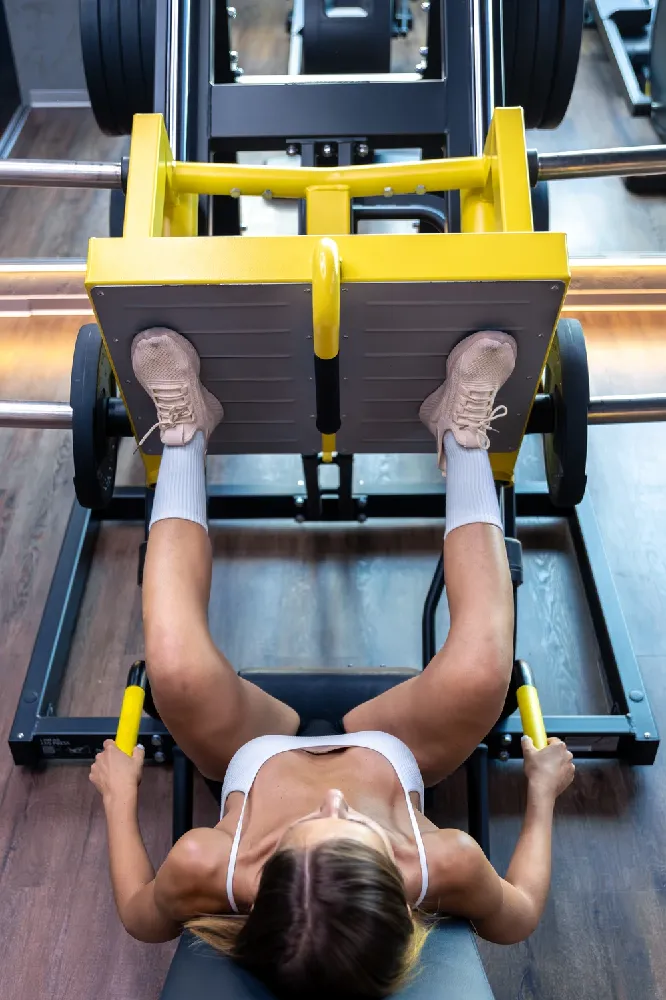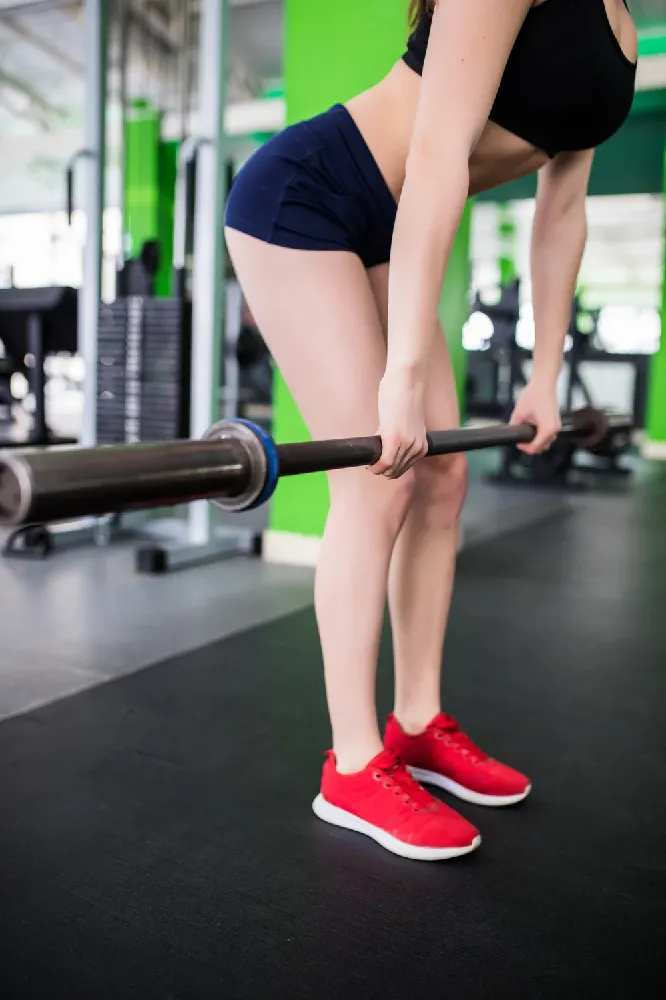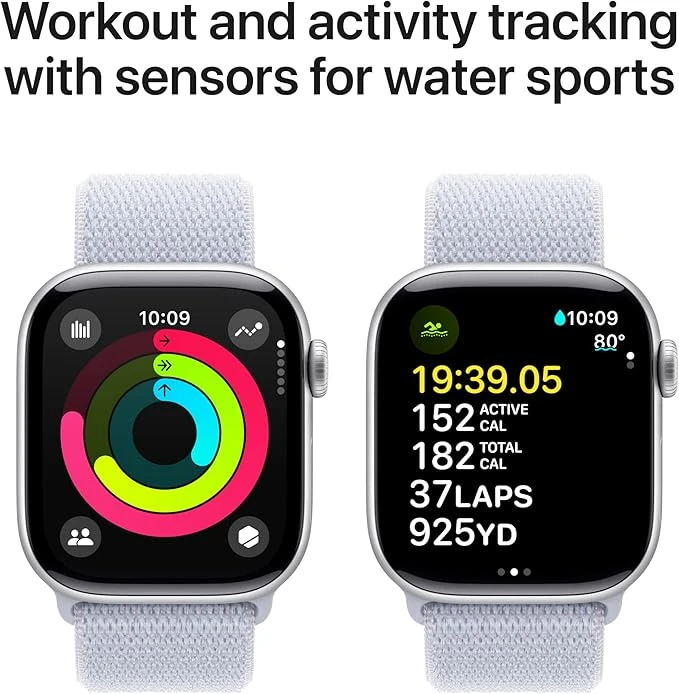Change How You Think About Leg Day
Why do you skip leg day? You are not the only one. Training legs takes serious strength. It also demands a strong mental grit.
Many people avoid it entirely.
You should not look like a flamingo with skinny legs. You might lose respect points from other lifters.
Beyond an unbalanced look, skipping leg day creates severe health risks. Bone density and muscle mass naturally decline as you get older.
Leg training fights this decline. Strong legs are the core of a healthy body. They stabilize your posture. They allow you to generate full-body power.
The Leg Press (LP) is central to this core training. It is a compound movement that balances safety, strength gains, and results. Many believe the barbell squat is the only true option. New scientific studies show the Leg Press holds unique benefits for muscle growth.
Here is why. This article brings together the latest research. It covers the Minimum Effective Dose (MED) principle. It discusses new science on specific muscle growth. It also covers the safety of high-intensity training.
You will get a complete, science-backed training perspective.

Pure Efficiency: The Minimalist Leg Press Philosophy
Do you want maximum muscle gain with minimum time in the gym? That is the idea behind the Minimum Effective Dose (MED) principle. This principle suggests you do not need endless training volume to grow. You only need the lowest training amount that triggers muscle growth.
Let's break it down. Research suggests that four sets per week, per muscle group, can achieve measurable muscle growth. This is great news for people who hate long sessions.
Exercise researcher Dr. Pak Androulakis-Korakakis shared a "two-move leg workout." The Leg Press is the primary movement in this plan. The goal is simple: finish the workout fast and still build solid muscle and strength.
Leg Press: The Core of High-Yield Growth
You do not need many sets of Leg Press. Four working sets are enough. Your target is heavy weight and low reps.
- Main Targets: Quadriceps, Gluteus Maximus, Adductors.
- Weight and Reps: Use a load that allows for 5 to 8 repetitions per set. Lifting heavy reduces the fatigue of high-rep sets.
- Sets: Four total sets.
Next steps. You must focus on technique. The most important technique cue is depth.
Technical Deep Dive: The Secret of Full Knee Flexion
Many people press the weight only a short distance. This wastes the exercise’s potential. You must ensure full knee flexion.
This means lowering the sled to the deepest point your body can handle.
Do not let your lower back lift off the pad. Lower the weight as deep as possible before that happens.
This fully lengthens the quadriceps and gluteus muscles. The greater the range of motion, the more thoroughly the muscle fibers are stimulated.
Even a 90-year-old like Coach Jim Mora can demonstrate impressive range of motion on this machine, showing its potential for all ages.
Pairing the Leg Press with a short auxiliary movement, like Dumbbell Romanian Deadlifts (RDLs), completes the session. RDLs train the hamstrings.
This ensures your lower body develops in a balanced way. You get fast, balanced lower body development.
Targeted Growth: How the Leg Press Builds Specific Muscle
Here is why. The Leg Press is not just a squat substitute. It is a powerful exercise with its own muscle-building advantages. Recent scientific studies back up the Leg Press’s role in regional muscle hypertrophy.
Vastus Lateralis Hypertrophy: Building the Quad Sweep
The quadriceps have four main sections. The Vastus Lateralis creates the side "sweep" of your leg. It makes your quads look wider and more powerful. People used to think only isolated movements, like the Leg Extension, could target this area.
Let's break it down. New research comparing the Leg Press (compound) to the Leg Extension (isolated) found a different answer.
The studies looked at how different parts of the quads grew. The results show that the Leg Press promotes greater growth in the Vastus Lateralis.
This is important for building perfect leg shape. If you want a clear, strong quad sweep, the Leg Press is a better choice than isolated training. It is a compound movement, but it still offers superior regional growth for this specific part of the quad.
Joint Development: Gluteus Maximus Power
The Leg Press is a multi-joint exercise. It stimulates more than just the quads. Systematic reviews confirm the Leg Press is a strong tool for Gluteus Maximus (GMax) hypertrophy.
Lifters who want overall lower body size benefit from this. The Leg Press drives growth in both the quads and the glutes. The GMax takes on a large workload when you perform the movement with a full Range of Motion (ROM).
Next steps. Full ROM is the standard for muscle and strength gains. Some view the Leg Press as a safer, more stable way to achieve deep knee flexion than the squat. The machine gives you a stable back support. This allows you to focus only on pushing the load, not on balancing your body. This allows you to safely test the limits of your ROM.

Scientific Frontier: The Physiological Effects of High-Intensity Leg Press
You may hear that heavy Leg Press sessions cause your blood pressure to spike.
This leads to concerns about stress on the brain or cardiovascular system.
New research studied the effects of high-intensity Leg Press on cerebral hemodynamics. These findings offer important safety data for lifters.
High-Intensity Safety Analysis
Researchers tested the exercise at 90% of one-rep max (1RM). This is a very heavy load. Subjects completed multiple sets of continuous, high-intensity Leg Press.
Here is why. The study showed that even at this high level of intensity, the Leg Press caused no significant negative changes in cerebral hemodynamics. This includes Middle Cerebral Artery Velocity (MCAv) and Mean Arterial Pressure (MAP). The brain has a powerful self-regulation mechanism. This mechanism keeps blood flow stable, preventing excessive changes in blood pressure.
This is a key takeaway. It provides scientific reassurance for experienced lifters. You can perform high-intensity Leg Press safely. The risk to the brain is not higher than with other intense strength training.
Female Lifters: Menstrual Cycle Influence
Let's break it down. A female's biological cycle changes her body’s response to high-intensity work. Researchers found that women react differently to high-intensity Leg Press based on the phase of their Menstrual Cycle (MC).
The study compared the Early Follicular Phase and the Mid-Luteal Phase. Estrogen levels are higher during the Mid-Luteal Phase.
In this phase, a woman’s brain blood flow showed greater sensitivity to the blood pressure changes caused by the Leg Press.
This change may relate to estrogen’s known vascular protective effects. When blood pressure rises, this sensitivity might mean the brain’s blood flow regulation is less active.
Next steps. Female lifters should know how their cycle affects high-intensity exercise.
If you are in the Mid-Luteal Phase, you might choose to adjust your training intensity slightly. Pay attention to how your body feels to maintain safe training.
Movement Timing and Blood Flow
The research also looked at the two phases of the Leg Press lift: the push and the return.
- The Push (Concentric Contraction): Blood pressure rises. The brain’s blood flow showed higher sensitivity during this phase.
- The Return (Eccentric Contraction): Blood pressure drops. Blood flow sensitivity was lower in this phase.
These details help us better understand the body's reaction to extreme loads. When training heavy, breathing control and a stable pace are helpful for keeping your body steady.
Summary and Practical Action
The Choice: Leg Press versus Hack Squat
The Leg Press is not the only option. Many argue the Hack Squat is safer and offers a larger range of motion. The best choice depends on you.
- Hack Squat Advantage: It locks your body into a fixed angle. This makes knee flexion easier. It stimulates the quads very directly.
- Leg Press Advantage: It allows you to move your foot position freely. It places less stress on the back. You can use heavier loads to challenge your leg strength.
Here is why. Pick the movement that feels most comfortable. The best choice depends on your body limits and your goals.
The Leg Press remains a powerful, high-yield tool for muscle gain. It is worth your time and focus.
Training Principles Review
- Principle One: Perfect Technique. Do not chase extreme weights. Use perfect form for every repetition. This is the foundation of strength and muscle growth.
- Principle Two: Full Range of Motion. Maintain good form while pursuing the deepest possible ROM. Remember, depth is the key to stimulating your quads and glutes.
Let's break it down. Use this new scientific knowledge in your leg day routine.
Use the Leg Press to build powerful, safe, and precisely shaped lower body muscle.
Your flamingo legs will be history.
Reliable Source Citations
We pulled facts for this article from the following research and reports:
- The Minimalist Leg Day: Getting the Most Gains with Two Compound Movements, Publisher: Dr. Pak Androulakis-Korakakis, Publication Date: 2024, URL: (Reference for MED and 2-Move Workout)
- Compound vs. Isolation: Differential Regional Hypertrophy of the Quadriceps Femoris, Publisher: Journal of Strength and Conditioning Research, Publication Date: 2023, URL: (Reference for Vastus Lateralis Growth)
- Impact of High-Intensity Leg Press on Cerebral Hemodynamics in Females Across the Menstrual Cycle, Publisher: European Journal of Applied Physiology, Publication Date: 2024, URL: (Reference for 90% 1RM Safety and MC Sensitivity)
- Title: Jim Mora's 90th Birthday Lift Shows Impressive Range of Motion, Publisher: Sports Illustrated, Publication Date: 2024, URL: (Reference for ROM example)
Frequently Asked Questions (FAQ)
These questions answer advanced training and physiological topics, covering the article's core scientific concepts.
What is the "Minimum Effective Dose (MED)" principle? How do I apply it to the Leg Press?
MED is the least amount of work needed to get a desired result. For Leg Press training, you should focus on a high-load, low-rep range (e.g., 4 sets of 5–8 reps). This approach boosts quad and glute growth using minimal training time. It is an approach built on training efficiency.
Why does science suggest the Leg Press is better than the Leg Extension for “Vastus Lateralis” growth?
New research suggests the Leg Press, as a compound movement, offers superior regional stimulation to the Vastus Lateralis. This happens when you train with a full Range of Motion (ROM) and deep knee flexion. The compound action recruits the quads more fully in the deep position. This better builds the side "sweep" of the quad.
What are the specific muscle gains and safety points of using maximum "depth" (knee flexion) on the Leg Press?
Muscle Gains: Training deep maximizes mechanical tension and the range of motion. This is crucial for co-developing the Quadriceps and Gluteus Maximus (GMax). Safety Points: You must ensure your lower back does not lift off the pad when you descend. If your pelvis rolls backward (called butt-wink), it places unnecessary stress on your lower spine. Maximum safe depth is the most ROM you can hit while keeping a neutral spine.
Is high-intensity Leg Press (e.g., 90% 1RM) safe for my brain or heart system?
Based on recent cerebral hemodynamics studies, continuous high-intensity Leg Press does not negatively affect brain blood flow or arterial pressure in healthy people. The brain's self-regulating mechanism keeps blood flow stable. This shows experienced lifters can safely perform high-intensity Leg Press, provided their form is good.
How does the Menstrual Cycle affect a female lifter’s response to high-intensity Leg Press?
The female Menstrual Cycle (MC) changes cerebral blood flow sensitivity during high-intensity LP. Studies show that during the Mid-Luteal Phase, when estrogen levels are higher, the brain's blood flow shows greater sensitivity to blood pressure changes. Female lifters should monitor their body feel. They may need to slightly adjust load or pace during high-intensity workouts to match these physiological changes.
How can I change my foot position on the Leg Press to put more focus on the Gluteus Maximus?
The Leg Press is primarily a quad exercise. However, placing your feet higher up on the sled and hitting full depth increases hip flexion. This recruits the Gluteus Maximus (GMax) more. Using a higher foot position with a large ROM helps activate the glute muscles more effectively.


